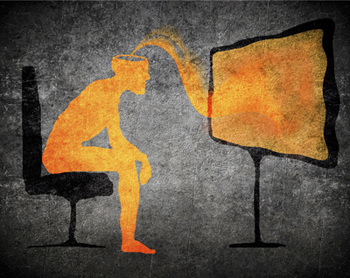
Subliminal Seduction 2.0

It shouldn’t be surprising that we unconsciously tend to favor people who look or act like ourselves. Psychologists refer to it as a “cognitive bias”, and there is a growing body of evidence that validates it.
The Hidden Persuaders, Vance Packard’s bestseller from the 1950s, exposed how advertisers employed psychological tricks to manipulate the public consciousness in order to build brands and stimulate demand for products. Considered to be somewhat scandalous in its day, many of tactics Packard wrote about are mainstream elements of advertising and marketing today. About 15 years after Packard’s book was published, Subliminal Seduction by Wilson Bryan Key took things a step further. Key claimed that subliminal messages, in the form of images and symbols, were being embedded in the photographs used in advertisements in order to stimulate and influence the subconscious mind. Although largely denied by the advertising industry, the concept of subliminal messaging garnered a good deal of media attention, aroused public backlash, and raised ethical questions regarding its use.
Well, those ethical questions may be seeing a revival soon, if Jeremy Bailenson is correct.
Dr. Bailenson, a Stanford University research psychologist, has spent the past dozen years studying virtual reality and how it can affect the human mind. His findings present some intriguing… and perhaps disquieting… insights, particularly for those of us who earn a living from marketing and advertising.
In one of his early experiments, he showed photographs of George W. Bush and John Kerry to prospective voters prior to the 2004 Presidential election. Unknown to the subjects, the photo of one of the candidates had been subtly morphed together with a photo of their own face, and they proved to be significantly more supportive of that candidate. A later experiment had students view a persuasive speech given by a computer-generated, virtual spokesperson. The students found the spokesperson to be more likeable and compelling when it began mimicking their own facial and body movements on a four-second delay.
It shouldn’t be surprising that we unconsciously tend to favor people who look or act like ourselves. Psychologists refer to it as a “cognitive bias”, and there is a growing body of evidence that validates it. What concerns Bailenson, however, is that technology holds the potential for exploiting a person’s image and using it to manipulate their behavior. How powerful would it be to receive an online advertisement delivered by a computerized version of yourself, or a spokesperson morphed to bear a subtle resemblance to you? Imagine a video demonstration of a product involving someone who looks like an idealized version of you, mimicking your own movements and facial expressions as part of their pitch.
This pushes the concept of subliminal seduction far beyond anything Key could have imagined, and Bailenson has already turned down offers to partner with advertising agencies. He believes his role is to “inoculate” us against such exploitation rather than encourage it. To that purpose, he tells his students to think twice before posting hi-res photos of themselves on social media sites; someday they could be used to produce a high-resolution avatar. Picture your own face looking back at you from a future spam.
Keep in mind that the avatar would not be an obvious clone – that might tend to be discomforting, if not downright creepy. Instead, as in the experiment with the presidential candidates, the image would be just close enough to register favorably with the cognitive biases living happily somewhere in your subconscious. In that test, by the way, none of the subjects noticed that their own facial characteristics had been combined with those of either Bush or Kerry.
According to Bailenson: “When you see yourself in an advertisement using a product you’ve never touched, and loving it – we call this “self-endorsing” – Does that make you like the product later on? We found the answer to be yes.”
Will there be ethical questions? You bet, and they may depend on the application. This could be viewed as a justifiable advertising tactic when convincing people to stop smoking, eat healthier foods, or save more for retirement. On the other hand, we would probably not want to see it being used by politicians to sway popular opinion or advance a partisan agenda. And we would undoubtedly resist being targeted by marketers looking to artificially stimulate demand for their product by having us “sell” ourselves.
The larger issue is defining what constitutes “fair play” when it comes to marketing and advertising. Beyond images of each of us that exist on the Internet today, there is an immense amount of digital information as well – where we shop, what we buy, what information we’ve searched for and which sites we visit.
As marketers, it is clear that we will soon have the ability to get deeply under the skin of each consumer and exploit their personal biases, beliefs and values. As an industry, we should consider setting ethical boundaries if we want to avoid the kind of negative attention that resulted from the Packard and Key books, or worse yet, run the risk of alienating the buying public.
NOTE: Those wishing to learn more about Dr. Bailenson’s research should read, It’s 10 P.M. Do you know what your avatar is doing? by Bonnie Tsui, in the January/February 2013 issue of Pacific Standard magazine.

Some genuinely quality blog posts on this web site , saved to bookmarks .